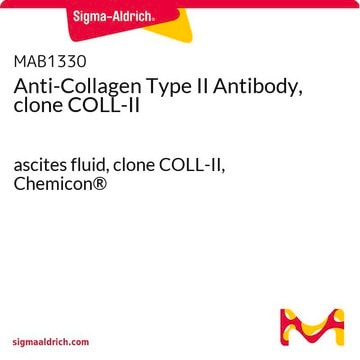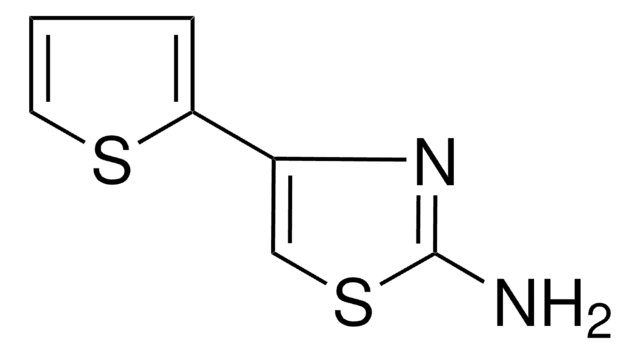MAB8887
Anti-Collagen Type II Antibody, clone 6B3
clone 6B3, Chemicon®, from mouse
Synonym(s):
Anti-Anti-ANFH, Anti-Anti-AOM, Anti-Anti-COL11A3, Anti-Anti-SEDC, Anti-Anti-STL1
About This Item
Recommended Products
biological source
mouse
Quality Level
antibody form
purified immunoglobulin
antibody product type
primary antibodies
clone
6B3, monoclonal
species reactivity
human, chicken, mouse, salamander
manufacturer/tradename
Chemicon®
technique(s)
immunofluorescence: suitable
immunohistochemistry: suitable
western blot: suitable
isotype
IgG1
NCBI accession no.
UniProt accession no.
shipped in
wet ice
target post-translational modification
unmodified
Gene Information
human ... COL2A1(1280)
Specificity
Its epitope is localized in the triple helix of type II collagen. It shows no cross-reaction with type I or type III collagen. Immunoblotting of CNBr peptides of collagen II shows that MAB8887 reacts with CB11 (25kDa) fragment which is the site of immunogenic and arthritogenic epitopes along the intact type II molecule.
In pepsin solublized collagen II, MAB8887 reacts with a 95-97 kDa fragment, as well as, the native single chain of 120kDa. If propeptides are present, MAB8887 will detect a 200kDa fragment.
Immunogen
Application
Cell Structure
ECM Proteins
Immunohistochemistry (Formalin/Paraffin): 1-2 μg/mL, 30 minutes at room temperature. Staining of paraffin embedded tissues requires digestion of tissue sections with pepsin at 1mg/mL in Tris HCl, pH 2.0 for 15 minutes at RT or 10 minutes at 37ºC.
Immunofluorescence
ELISA
Optimal working dilutions must be determined by end user.
Target description
Physical form
Storage and Stability
Analysis Note
Cartilage in lung or fetus
Other Notes
Legal Information
Disclaimer
Not finding the right product?
Try our Product Selector Tool.
Storage Class Code
12 - Non Combustible Liquids
WGK
WGK 2
Flash Point(F)
Not applicable
Flash Point(C)
Not applicable
Certificates of Analysis (COA)
Search for Certificates of Analysis (COA) by entering the products Lot/Batch Number. Lot and Batch Numbers can be found on a product’s label following the words ‘Lot’ or ‘Batch’.
Already Own This Product?
Find documentation for the products that you have recently purchased in the Document Library.
Customers Also Viewed
Our team of scientists has experience in all areas of research including Life Science, Material Science, Chemical Synthesis, Chromatography, Analytical and many others.
Contact Technical Service







